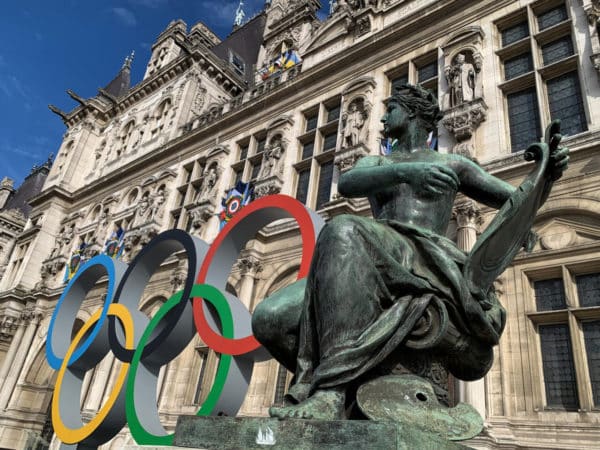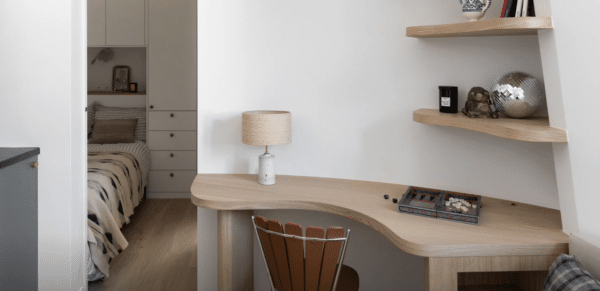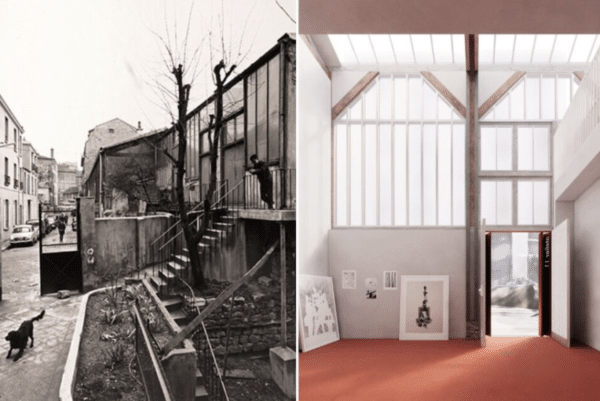Expert Insight, Breaking News, and Insider Stories on Real Estate in Paris

Serge Gainsbourg’s haunted house embalms his mystique.

In the heart of the Left Bank in Paris, the former residence of the enigmatic chanteur, Serge Gainsbourg, has transformed into a veritable shrine to the French icon. Long before it officially assumed its status as a museum, the legendary singer-songwriter affectionately referred to this space as his “maison-musée.” The mystique surrounding Gainsbourg is so intertwined with his iconic address at 5 bis rue de Verneuil that it transcends his body of work.
This hallowed ground bore witness to the final two decades of Gainsbourg’s life, first as the abode he shared with Jane Birkin, their daughter Charlotte Gainsbourg, and Birkin’s daughter Kate Barry, forming a sort of “French royal family” as dubbed by Le Monde. Later, after Birkin’s departure, the apartment became the residence of Gainsbourg and his partner, the model Bambou, and their son Lucien. In 1991, when the singer passed away, devoted fans descended upon the street, adorning the beige façade with adoring messages, and even now, fresh graffiti periodically adorns the edifice.
Gainsbourg’s enduring popularity in France remains an enigma. Despite the controversies that have arisen regarding his personal life, particularly in the post-#MeToo era, his music continues to resonate with successive generations of the French populace. Jane Birkin’s diaries recount Gainsbourg’s abusive behavior, and his televised antics, such as the infamous 1986 incident alongside Whitney Houston, where he drunkenly professed his desire for her, have left a stain on his legacy. His notorious fixation with Lolita-esque relationships and a liaison with 16-year-old Constance Meyer at the age of 57 further tarnish his reputation. “There are lots of women, feminists, in France who don’t celebrate Gainsbourg at all anymore,” says Chloé Thibaud, a journalist who has explored his literary influences. The French magazine Philosophie even raised the question, “why a man who in theory checks every box to be ‘cancelled,’ still hasn’t been.”
Nevertheless, a substantial segment of the French media continues to hold Gainsbourg in high esteem. As biographer Bertrand Dicale aptly puts it, “he only became a genius after his death.” Recently, fans eagerly thronged to the inauguration of his former residence, now known as Maison Gainsbourg, which forms part of a novel cultural site. Across the street at number 14 lies a complementary museum dedicated to his life and career. However, it is the house itself that exerts the real allure, with tickets selling out until the year’s end.
For many, this moment was long-awaited, even cherished for decades. Christian, who had traveled from Cologne, Germany, exclaimed, “I’ve been waiting for this moment for 30 years.” Marie-Caroline Ramette, attending with her partner and daughter, reminisced, “It was my father who introduced me to Gainsbourg when I was a teenager. We all feel like we know him.” Aurélia Bardin, a 22-year-old visitor, was moved to tears after her visit, describing it as “extremely moving.”
The visit begins with an audio guide, featuring Charlotte’s husky voice saying, “Come with me, I have a key.” The iconic front room serves as the centerpiece, where Gainsbourg used to engage in late-night conversations with police officers, convincing them to part with their badges or handcuffs. A glass table is adorned with rows of these badges, accompanied by an array of eclectic curiosities: a group of red-waistcoated toy monkeys, a bronze bust of Jane Birkin’s body, a drinks cabinet shaped like a walnut, and in the corner, a lifelike anatomical model accentuated by dim lighting, underscoring the room’s ambiance.
Gainsbourg, known for his five-pack-a-day unfiltered Gitanes habit and almost perpetual glass of pastis in hand, met his second heart attack’s demise in the bedroom upstairs. Charlotte’s narration lends a funereal tone to the proceedings. She points out the still-visible depression on the couch where her father used to sit, emphasizing the house’s unaltered state since his death in 1991. Three Snickers bars, one half-consumed, remain in the fridge. The windows are tightly sealed, denying entry to natural light, a measure taken to preserve the objects and furnishings. The result is part haunted house, part sacred sanctuary.
Maison Gainsbourg is an extension of the Gainsbourg legend, an unapologetic self-portrait, as described by biographer Dicale. Gainsbourg’s meticulously crafted dandy style, inspired by the 19th-century novels he cherished, pervades every aspect of the dwelling. Influenced by Birkin, he forged a new sartorial language. Show a typical French individual his signature ensemble – white Zizi Repetto brogues, jeans, a khaki shirt provocatively unbuttoned beneath a tailored pinstripe women’s jacket – and they would instantly recognize it as his own.
“He was one of the first people to be a media animal. He knew how to play with his character for the media and how to make a buzz,” explains Thibaud. The house manifests Gainsbourg’s unwavering commitment to his image, sometimes bordering on the absurd, epitomized by a gargantuan glass chandelier incongruously suspended in the center of the bathroom. Charlotte recalls measuring her height using its lowest glass orb as a child, noting when it began to graze her head.
The tour delves into private and even grotesque details. Upon reaching the gothic bedroom, with its low bed cloaked in black fur and a flamboyant golden bench resembling a swooning mermaid, Charlotte recounts discovering her father’s lifeless body there, alongside Kate Barry and Bambou. “We lay down beside him and time stopped,” she recalls, adding, “People came to embalm him, so we could stay longer.”
The museum segment of Maison Gainsbourg offers a more conventional exploration of the Gainsbourg saga. Along a corridor draped in black, mirroring the apartment’s style, it provides a highly detailed, chronological overview of his life and career.
Born as Lucien Ginsburg in Paris in 1928, Gainsbourg gained notoriety in the 1960s for his songwriting, creating hits for luminaries like Brigitte Bardot, France Gall, Anna Karina, and most famously, Birkin. Their controversially sensual moans in “Je t’aime … moi non plus” propelled the song to international number one status. Throughout his career, he traversed various musical genres, from jazz and pop to Afro-Cuban, reggae, and funk. His 1971 concept album, “Histoire de Melody Nelson,” exploring the affair between a middle-aged man and a 15-year-old girl, has been widely sampled by dance and hip-hop artists. His irreverent rewrite of the French national anthem as a reggae song earned him the ire of nationalists. Dicale highlights that the albums now deemed classic were not commercial triumphs, and even in his later years, Gainsbourg remained an immensely divisive figure.
Maison Gainsbourg does not sidestep Gainsbourg’s problematic facets but navigates them thoughtfully.
Source: https://www.washingtonpost.com
Contact Paris Property Group to learn more about buying or selling property in Paris.













